#greater noctule bat
Text
today's dracula daily had me wondering what kind of bat dracula might be posing as, so I looked up a few things.
Largest species in the British Isles: Noctule Bat (Nyctalus noctula) with a wingspan of 32-40cm (12.6 to 15.7 inches)
Another large bat species: Serotine Bat (Eptesicus serotinus) with a wingspan of 32-38cm (12.6 to 15.0 inches), less common species found in southern England and Wales
Most common: Soprano Pipistrelle (Pipistrellus pygmaeus) with a wingspan of 19-23cm (7.5 to 9.1 inches)
Second Most common: the visually nearly identical (though slightly bigger) Common Pipistrelle (Pipistrellus pipistrellus) with a wingspan up to 20cm (7.9 inches)
source for above: woodland trust
Now those would be the bats that Mina considers normal sized. Now bats certainly range much larger, such as the golden crowned flying fox with a wingspan of five feet. But I don't think we need to look so far from England for a bat that Dracula might turn into that Mina perhaps would view as "giant"
the largest species in mainland Europe is the greater noctule bat (Nyctalus lasiopterus), with a wingspan up to 46cm (18 in). The greater noctule bat is also one of the few bats known to eat passerine birds*, and the only species that hunts them on the wing (in flight) versus while roosting*.
It's rare in Romania, but it's there. And it looks incredibly adorable
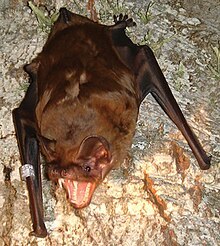
image description: a chocolate brown bat with a silver band on one wing upside down on what appears to be either rock or wood, it is hard to tell for sure. The bat has its mouth open, displaying its teeth, including its pointy fangs.
image source: wikipedia
*Aka perching birds. Think sparrows, songbirds, corvids. Passerines are a very diverse group of birds.
*There may be another species of bat that also does this, the Great evening bat (Ia io) of eastern and southeastern Asia.
#dracula daily#noctule bat#greater noctule bat#nyctalus lasiopterus#great evening bat#ia io#Nyctalus noctula#serotine bat#Eptesicus serotinus#soprano pipistrelle#Pipistrellus pygmaeus#common pipistrelle#Pipistrellus pipistrellus#vampires#long post
345 notes
·
View notes
Text
Yes Hello?

#Greater Noctule#bats of Europe#bat of the day#daily bat#bat#bats#batposting#cute bats#cute animals#look at them#they answer door!#Hello
373 notes
·
View notes
Text
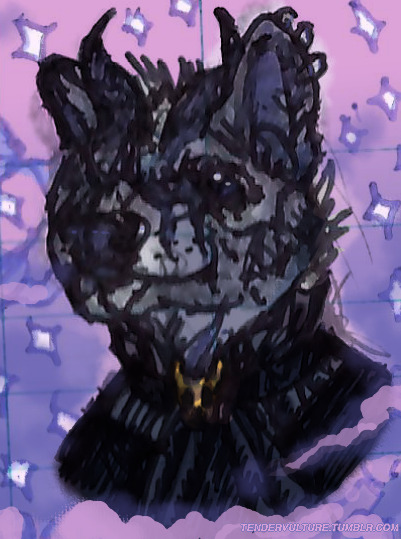
Felt sad, drew this handsome devil, felt better instantly :3
Quintessence ghouls real.
#the band ghost#aether ghoul#nameless ghouls#weirdfur#unglamored ghouls#anthro#greater noctule#batghouls#headcanons#character design#my designs#my art tag (abandon all hope ye who enter here)#fandoms#art#fanart#bats#mammals#animals#vertebrates#mine
21 notes
·
View notes
Text

Fun fact: the Mexican free tailed bat is the fastest mammal in the world.
My Familiar’s Ghost part 49
Masterpost
(ID in alt and under cut)
ID: 1. Close up of vampire Guillermo as he rips his way out of the cloak tied around him, angry and snarling, bloodied stake still clutched in his right hand. 2. Repeat. From somewhere offscreen, between the panels, Nandor speaks: 'Okay, okay, I can see you are still upset with me, but...' Guillermo flips his head left and right, scenting the air with glowing eyes as he searches for Nandor. 3. Low shot from behind Guillermo's shoulder as he whips his head up toward the ceiling. Nandor is pressed up into the corner above the drink machine and a CPR poster, arms and legs spread out as he sticks to the wall spiderman style. He gives Guillermo a nervous grin and continues, 'Do you really want to kill me?' 4. Zoom in on Nandor as a stake flies into frame from below. Nandor quickly poofs into a bat with a 'yeek!' and dodges to one side, eyes wide and panicked. The stake embeds itself two inches into the sheetrock precisely where Nandor's heart had been a moment before. 5. Wide shot from above as Nandor turns toward the viewer and begins to fly frantically away from Guillermo, squeaking, 'Okay, you do! You do!' On the ground below, Guillermo glares after him, fists raised in readiness, before poofing into a bat himself and swooping in after Nandor, fangs bared and eyes glowing. 6a. Mid air bat fighting! Guillermo, his Mexican free tailed bat form about half the size of Nandor's greater noctule bat form, catches up quickly and lashes out with his clawed feet, screeching. Nandor dodges, turning himself in a barrel roll. 6b. Guillermo lunches out with his teeth, snapping at empty air as Nandor launches himself upward in a few harried flaps. 7. Shot from behind as Nandor turns tail and flees, flying toward the open door to the hallway, Guillermo in hot pursuit. 8. Shot from the front as Nandor, in the foreground, flies through the hall back to the main room of the Panera, panicked and grimacing. Guillermo is following close behind, hissing menacingly, his eyes leaving glowing trails as he whips through the air in hairpin turns. 9. Repeat. Nandor emerges into the main room and pauses, slowing his flight as he glances behind him and realizes Guillermo is not there. 10. Guillermo, back in vampire form, ambushes from the side and grabs Nandor with his left hand, smashing and pinning him into a nearby wall before he has a chance to dodge. The wall cracks and buckles with the force of his attack. Nandor opens his tiny little bat mouth as if to cry out in pain. Guillermo snarls open-mouthed, right hand raised with claws out to attack again. /end ID
#wwdits#my familiars ghost#nandermo#mlm#vampire guillermo#Guillermo de la cruz#nandor the relentless#what we do in the shadows#what we do in the shadows fx#blood tw#my art#fanart#fan comic#image described
575 notes
·
View notes
Text
Mammals of Maglor’s Gap and Lothlann
Now that I’ve finished world building posts on birds for each Fëanorian realm pre Amon Ereb, I’m going through mammals next! Mammals of the March of Maedhros can be found here and my environmental world building Masterlist is here!
Maglor’s Gap was the widest break in the mountains and cliffs dividing Beleriand and the lands to the north. It lay between the blue mountains to the east and the March of Maedhros to the west. Lothlann was a wide expanse of plains to the north of the Gap. The rivers greater and little Gelion ran around the western and eastern borders.
Forest steppes: wild goat, wood bison, southern white breasted hedgehog, gray marmot, ground squirrel, dormouse, woolly hares, long eared hedgehog, gray shrews, northern hog badger, sable (rare), steppe mouse, lesser noctule (bat), wildcat, red fox, red deer
Bordering mountain fences: Caucasian Tur, mouflon, chamois, alpine pika, pond bat, marbled polecat, saiga antelope, steppe polecat, mountain weasel, ibex (rare), argali
Plains: goitered gazelle, steppe wolf, wild horse, northern water vole (by the rivers), snow vole, grey dwarf hamster, common hare, common rabbit, striped field mouse, ural field mouse, harvest mouse, mountain hare, field vole (also primarily by rivers), wild horse
World building notes:
The horse based cavalry of Maglor is one of the few details we have about this region. I headcanon that the horses in question are a mixture of the descendants of the Valinor born horses brought by the Fëanorian host as well as wild horses from Estolad, Himlad, Lothlann and the other plains regions of Eastern Beleriand.
Sheep and goats provide the majority of milk and cheese products in the Gap. Some of these species are imported from other regions like sheep from Thargelion.
Domesticated bovine are rare in Eastern Beleriand outside Thargelion and parts of Estolad. There are however wild and semi domesticated bison such as the wood bison, especially on the borders of forested and forest steppe regions. Fur, skin and bones from bison are used by both Noldorin and Avarin elves for clothing and other materials.
Wild hamsters, rabbits, hares and voles were used by a select few of Maglor’s cavalry as companions and even spies.
A regiment of foot based scouts had the sigil of a hare in the form of a light silhouette upon a black background.
42 notes
·
View notes
Text
So while reading Dracula, I was curious about what kind of bat Dracula is transforming into.
Romania is a great place to live if you want to go unnoticed as a bat, since the country has one of the most diverse number of bat species in Europe, with over 32 different species! Two of Europe's largest bat colonies can also be found in Romania. There are however, no blood-sucking bat species in Europe (they are instead all found in Central and South America).
If Dracula wanted to hide out unbothered in England, he might choose the form of the Common Pipistrelle, which is the most common bat species in England:

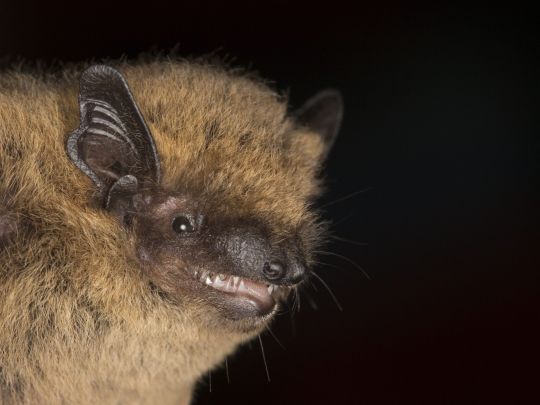
But Stoker refers to Dracula's bat form multiple times as "large," and Pipistrelles are little babies, only about 2 in./5.2 cm long. What might be a better fit is the Greater Noctule Bat species:

The Greater Noctule Bat is one of the largest bats in the world, and the largest bat in Europe. It has a wingspan of 18 in./46 cm. and is one of the few bat species that eats birds. In addition, where most bird-eating bats sit and wait for a bird to fly by, the Greater Noctule Bat actively hunts them.
(Of course Dracula is very old and has had plenty of time to travel, so he could have easily vacationed in South America and decided to become a vampire bat.)
And as a small aside: bats are incredibly important to the world's ecosystems, but species worldwide are currently being infected by White-Nose Syndrome, a deadly fungal disease that is wiping out entire populations. You can go to this website to see how you can help the bats fight against this illness!
50 notes
·
View notes
Note
sorry if you've talked about this before, but I'm curious if clanmew have different words for different bat species? they obviously differentiate insects and birds, but bat's are harder to distinguish at a glance. cats would have an advantage with their hearing, being able to hear bat's squeaks (and I think different species make different patterns and sounds?) but like. I don't remember how many bat species there are here (I think noctule, pipistrelle, greater horseshoe, lesser horseshoe, daubenton's, whiskered, barbastelle, and serotine? I mightve missed a couple), but I love bat's so thought I'd ask. pipistrelle are the most common though I'm from the south-east of England so I occasionally see daubenton's too.
FOUR bat species! Over here in the main entry for birds, check there if you'd like more trivia on them. Clan cats count them as very special, blessed songbirds.
The ones that Clan cats have words for so far;
Pipistrelle (Pipistrellus pipistrellus) = Popep
Soprano Pipistrelle (Pipistrellus pygmaeus) = Ipi'ip
Long-eared Brown Bat (Plecotus auritus) = Fepfr
Common Noctule (Nyctalus noctula) = Shi'po
There are four more kinds of bat, for EIGHT total in this region, that I have not yet described because I don't have good access to their song recordings (Even the main four were ass on butts to hunt down) If you have clear recordings of the songs of these four I'll add them too.
Pipistrellus nathusii
Nyctalus leisleri
Myotis daubentonii
Myotis nattereri
#Southeast England has more bat species#And more moth species funny enough#Because this region is a lot colder and further north#bats#And yeah Clan cats are better at distinguishing these because they are able to hear stuff we as humans can't#For example the Soprano Pipistrelle was only discovered pretty recently#But they've known about it for eons because its song is totally different
24 notes
·
View notes
Note
Hii! I’m very happy I found your blog cuz bats are my favourite animal! Sorry if you’ve answered this before, but what’s your favourite bat? Mine is the ghost bat!!
Oh gosh, I couldn’t pick just one!! But some standouts who I have a special place in my heart for:
Any megadermatid! They just look super cool to me…

Common noctules! The first bat I ever identified in flight :]
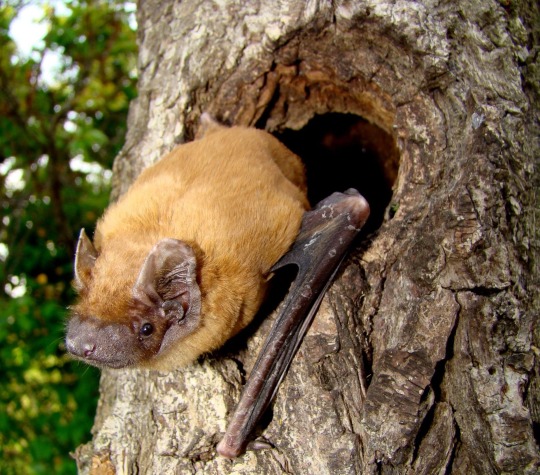
And horseshoes, specifically greater horseshoes! There’s a colony near me!

I’m glad that you enjoy my blog, thank you for the ask!! <3
13 notes
·
View notes
Text
Sorry my vampire work colleague ate a bird in front of you can we still go out sometime??
“He caught a bird.”
“What?” Jade asked.
“Your bat,” Violet said, her voice lower and sharper again. “He’s eating a songbird in my barn.”
Jade looked up and wished she hadn’t. A mess of feathers and noodle-yellow talons were halfway down the bat’s throat.
“Well, it’s not one of your animals,” Jade offered. “Right?”
Anyway Caz turns into the greater noctule bat and if you look it up you will find this exact scenario documented with photos
2 notes
·
View notes
Note
That was one of the ones! My ideas were Northern Ghost Bat, Honduran White Bat, Tent Making Bat, A Flying Fox, or a Painted Bat.
Theres just. Too many cool/cute/funny bats. Like the Greater Noctule Bat is hilarious.
oh those are all good...
1 note
·
View note
Text

Started doing some to-scale size references for Redwall-verse species, including some speculative ones (and corrected identifications, such as Jacques's few infamous instances of "crested lizards"... those are newts, buddy).
All the creatures in this series are obviously much less tiny or gigantic in proportion to each other than their real-life inspirations. Kinda got to do that to make a building useful for both small mice and massive badgers and otters!
Here we get our first examples of sizes that the birds come in! I very much took into account that birds often look bigger than similar-sized mammals and in fact often have quite a bit less mass than a same-sized-lookin' rodent due to the fluffy feathers (The sparrow here, despite fluff taking up the same space as an average mouse, actually would be a bit smaller and would weigh probably only half as much). So you see the very smallest category among the bird species will be even a bit smaller than the smallest creatures that have a more anthropomorphic treatment--which are the small amphibians beyond any doubt. I included the three newt species which have either appeared or would definitely be present based on geography... and also one non-newt salamander species that I would have just found very neat to appear somewhere, the Alpine Salamander. Which is, oddly, a viviparous species due to its very... alpine home! Also need to have something which is clearly labeled "salamander", since the confusion with "newt" and lizards seems bizarrely omnipresent not just in Redwall, but in public knowledge. Y'all don't know nearly enough basics about the difference between reptile and amphibian (you're doin' better than many Redwall characters if you even know there's a difference!).
On this page, Newts are without exception classed into "Vermin", and I would speculate other salamanders would be lumped into that as well. Of the large bats here, I have done some speculation and think that the Greater Horseshoe Bat and the Greater Noctule--being predators of small vertebrates and passerine birds respectively--would get classed into Vermin as well. The Mastiff bat and the small birds shown here are considered to belong to class "Goodbeast" (though notably there are other bird species that would rival the ones shown in size which would get the "Vermin" class, such as Starlings).
#redwall#traditional media#size comparisons#species comparisons#amphibians#newt#salamander#bird#small birds#anthropomorphic#anthro#anthro art#bats#greater noctule#greater horseshoe bat#mastiff bat#wren#sparrow#robin#great crested newt#smooth newt#palmate newt#alpine salamander#fan art#series done salamanders dirty
25 notes
·
View notes
Text
Cecilverse Creature Concept: Flitterwurm
In the continued effort to create a tameable dragon after the disastrous failure of the Dracogriffs, a Wizard decided to try her own hand.
She believed that the Dracogriff wasn’t completely off, combining the necessary elements together as is required for a dragon. The problem was that the choice of animals were far too dangerous to begin with, and there was far too many of them in the chimera for there to be any hope of stability.
To rectify these mistakes, the Wizard imported a large group of monitor lizards, believing them to be the perfect animal for the base of her own chimera. The monitors had three of the four elements in perfect balance, Earth, Fire, and Water(being semi aquatic, venomous animals), and only needed Air added to complete it. Her chosen animal was a species of bat, the Greater noctule bat, one well known for it’s size and large fangs. Despite it’s size, being the largest species of natural bat available to her, she believed that while the bat would have a connection to Air, it would be a connection about on par with the monitors balanced connection to it’s own three elements. Their combination seemed to go off perfectly at first, though their chimera didn’t quite blend the two animals completely.
Named “Flitterwurm” the chimera’s resembled the monitor physically, with the addition of the bats wings, ears, fangs and patches of their fur. The Wizard lived long enough to brag to anyone who would listen that she had succeeded where Cockatrice and Dracogriffs had failed, and while her chimeras still needed a little work, she had been bitten by one of them, they were far less hostile than either of the others. Needless to say she died soon after.
It turns out that the Flitterwurms were a crafty bunch, as they had gained features of their halves, the poison of the monitor, and the echolocation of the bat, and combined them into a deadly hunting combination. They would hunt and bite their prey in the dark, injecting their magically enhanced venom, then merely wait for their prey to die or be too weak to fight back and finish them at their leisure. As with the other chimera before them, the Flitterwurm escaped and spread, becoming potent nocturnal predators.
#creature creation#dragon#pseudo dragon#magic#Cecilverse#Flitterwurm#Nile monitor#greater noctule bat#monitor#bat
11 notes
·
View notes
Text
Superstar Bat!

#Griff the Noctule!#Greater Noctule#Bats of Europe#bat of the day#daily bat#bat#bats#batposting#cute bats#cute animals#Look at him!#LOOK AT HIM#THIS LITTLE MANS IS A STAR
203 notes
·
View notes
Photo





20.09.21
Dad and I watched an evening online talk about bats today. It was really, really interesting! We watched the talk using Mum’s laptop which we mirrored onto my 4K TV.
Here are some screens I did of the talk.
We learnt about many UK bat species including:
Common pipistrelle bat
Brown long-eared bat
Daubenton's bat
Brandt's bat
Barbastelle bat
Greater horseshoe bat
Noctule bat
Natterer's bat
See link below to find out more about bats in the UK:
https://www.bats.org.uk/about-bats/what-are-bats/uk-bats
The talk will be available on YouTube soon.
5 notes
·
View notes
Text
Laszlo is a nathusius pipistrelle bc they are teeny and actually SING to attract mates!
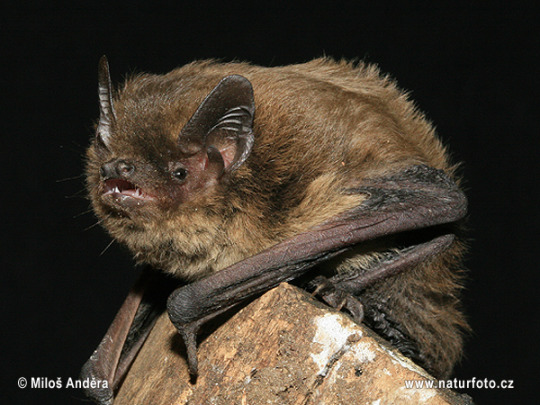
Nadja is a geoffroys bat (which is hilarious bc...Jeff) bc they really like olive plantations for some reason and also do a lot of screaming
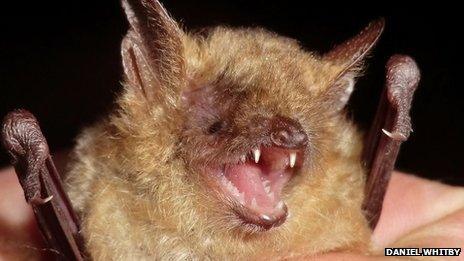
Nandor is a greater noctule bat, big enough to eat birds but a face cute enough you'd let him
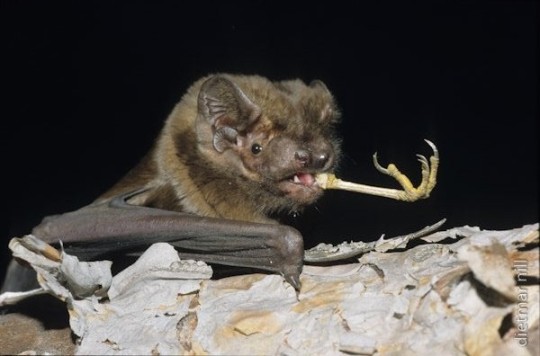
#wwdits#bats#vampire bats#laszlo cravensworth#nadja of antipaxos#nandor the relentless#YES these species are geographically accurate to their regions of origin i checked!!!#rip spectral bat nandor i wanted you so bad djdjsksk#my posts#not art#id in alt
596 notes
·
View notes
Photo

🦇Bat Fact! Do you know of the Greater Noctule Bat (Nyctalus lasiopterus)? This bat can be found in Europe, West Asia, and North Africa in deciduous forests near rivers. One of the largest bats in Europe, weighing on average between 40-75g, this bat is a carnivorous bat and will regularly prey on birds. When not hunting, this bat can be found roosting in trees year round. While not much is known of this bat’s threats, it is know that its greatest predators are the Barn Owl and Eurasian Eagle-Owl. This bat is listed as “Vulnerable” through the IUCN🦇
📸Photo by Popa-Lisseanu et al. 2007📸
#batfacts #bats #bat #akhyls #education
⬇️Follow Bat Facts⬇️
https://akhylsthebat.tumblr.com/
https://www.minds.com/akhylsthebat/
https://twitter.com/AkhylsBatFacts
https://t.me/AkhylsBatFacts
https://www.facebook.com/groups/137858924078846/
Disclaimer: All images used here are for educational purposes and are not used in any way for profit or to promote any products or services. Copyright Disclaimer under section 107 of the Copyright Act 1976, allowance is made for “fair use” for purposes such as criticism, comment, news reporting, teaching, scholarship, education and research. Fair use is a use permitted by copyright statute that might otherwise be infringing
6 notes
·
View notes